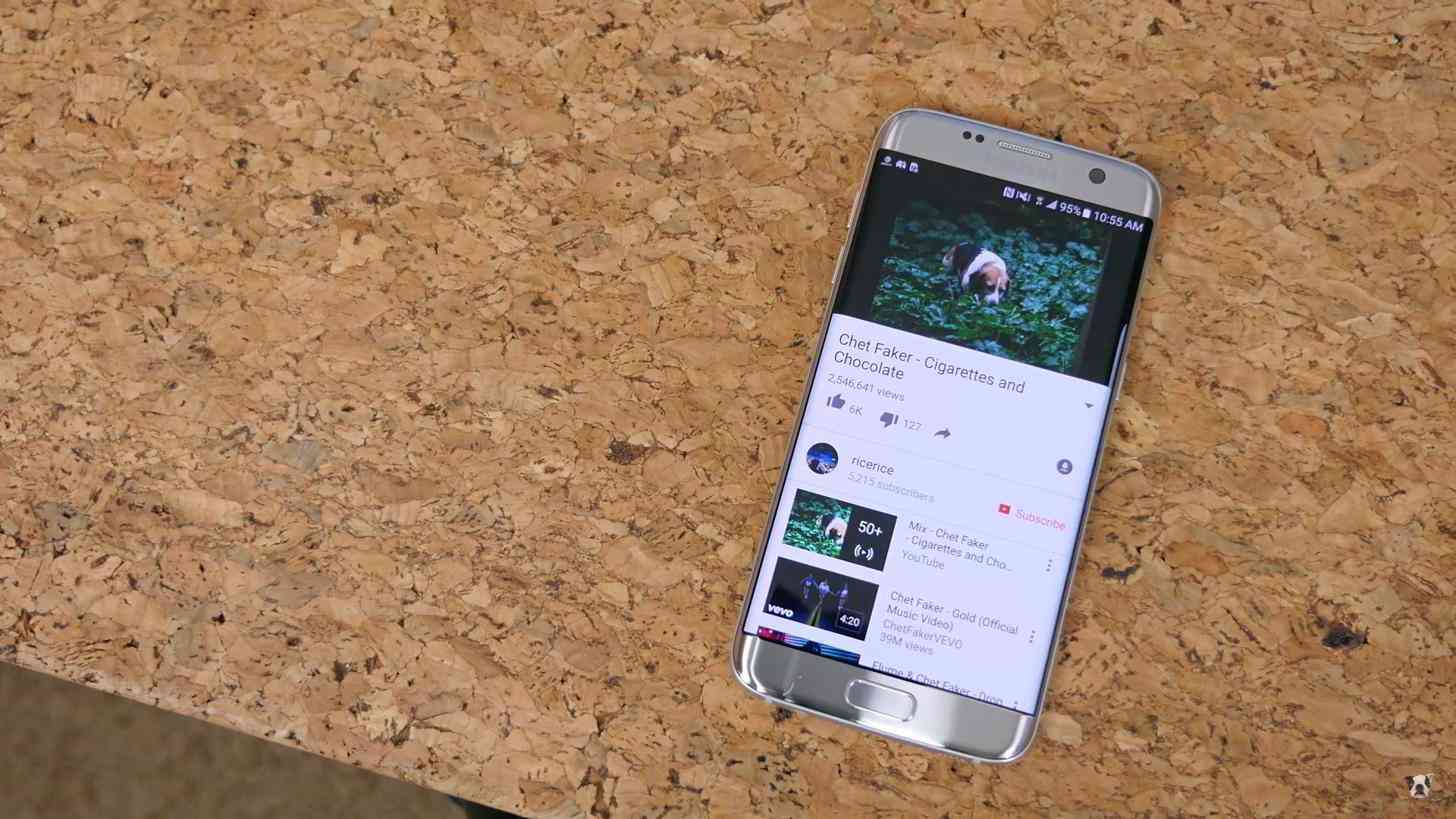
A glossy glass back, an aluminum frame, and a beautiful, premium unibody design; these are all major aspects of Samsung’s overhaul of the Galaxy S6 design unveiled last year – a design that many would say is fitting for how far the Galaxy S line of smartphones have come. As of today, Samsung’s Galaxy S is one of the most popular flagships in the industry, so it only seems fitting that Samsung ditch the old “cheap” polycarbonate build in order to compete with the demand for flagship smartphones with premium build and feel.
While the Galaxy S6’s hardware design was a big change in itself, an even bigger surprise (or lack thereof, as rumors had been heavily hinting at it for months beforehand) was in store for us at the Galaxy S6 event: the Galaxy S6 Edge.
The Galaxy S6 Edge is extremely similar in both design and specs to the S6, with the exceptions of, well, edges. These edges provide additional features, such as displaying the time when the device is off, acting as a notification light when you place the device face down, and allowing you to access messages and notifications. You can also download 3rd party edge-specific apps from the Galaxy Apps store. For the most part, though, the edge design is primarily novelty.
I don't think anybody was surprised this year when the S7 came out with both an original and an edge version once again. While the S6 Edge may not have provided much functionality over the original, the unique design was generally well-received by consumers.
However, it does feel like the “new car smell”, so to speak, of edges are wearing off. Even with the additional features that the Marshmallow update brought for the edge display, nothing groundbreaking has really come of edge displays, even with the new Galaxy S7. On the anecdotal side of things, people have complained that it is fairly easy to accidentally activate something by touching the edges with their palm, and the glare from the curved display can be distracting. While I'm sure accidental touch rejection is something that will continue to be improved with time, I'm not sure anything could be done about the glare.
The design and bigger battery of Samsung’s Edge devices seem to be what make it so popular rather than its functionality, but I do wonder how long people will be interested in the edge design. So many designs have come through the smartphone space over the past (almost) decade, and the flat, slab style design is the one that has survived the longest. While the Edge has lasted for two generations thus far, which is one generation longer than a good many of the designs we have seen, I have to wonder if edges truly are here to stay.
Readers, what do you think will become of Edges in the future? Do you think they're here for the long haul, or do you think it will end up being a passing fad? Share your thoughts with us in the comments below!